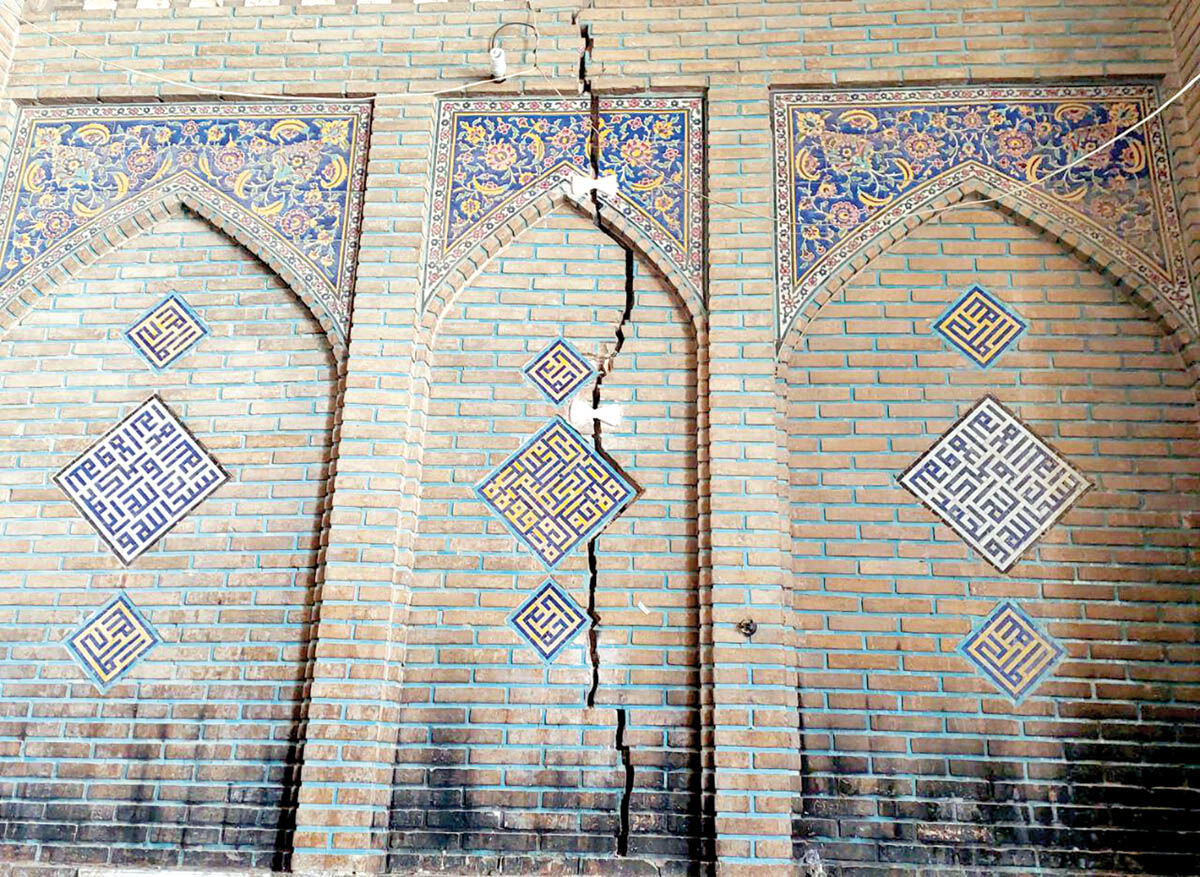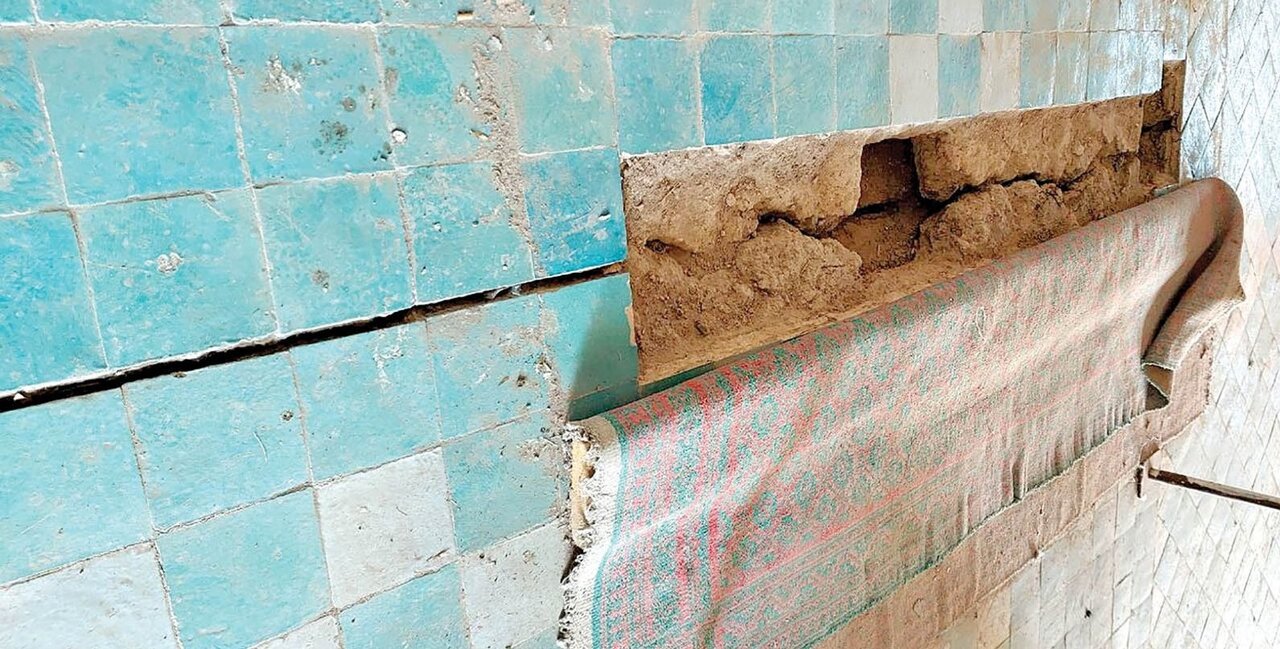Cracks widening, collapse looming: Isfahan’s treasures at risk

Ongoing cracks in Isfahan are no longer limited to the homes and roads of this ancient city. Now, they are widening the roofs and walls of centuries-old heritage sites, endangering them by a sudden collapse!
The ancient city, which was once the capital of Persia during the Safavid empire, is currently grappling with a major crisis of subsidence, air, and environmental pollution, and migration is due to the unrestrained extraction of surface and groundwater, mostly attributed to the erroneous irrigation practices of agricultural fields, followed by heavy industries, to name a few.
The pace of destruction in the past couple of years has been more intense to the point where the main columns of the Jameh Mosque, one of the most important heritage sites globally, have tilted to the sides, and forward-moving cracks are visible in all this grand architecture.
Another example is the centuries-old Seyyed Mosque, which is taken apart by cracks encircling domes, walls, ceilings, and the floor.
Subsidence in Isfahan is not just a danger for the people of this city, but a national and even global issue. Therefore, it's not a local issue just for local people to cope with. For this situation, the whole of Iran should join hands to save Isfahan from collapse.
Apart from reduced rainfall and climate change as important reasons for water scarcity, Isfahan suffers from unrestrained extraction upstream of its historical river, Zayandeh Rud, where water is extensively utilized for agricultural purposes and improper irrigation. Available statistics indicate that approximately 800 million cubic meters of water are used annually for agricultural purposes. This is while the volume of Zayandeh Rud water is about 400 million cubic meters.

This means that twice the capacity of Zayandeh Rud water is being used for agricultural purposes. Agriculture has significantly expanded in recent years in areas that lack the capacity and potential for cultivation, and sometimes crops such as almonds, which require a lot of irrigation, are cultivated upstream.
While this practice has yielded substantial profits for farmers, it has placed Zayandeh Rud, which is Iran's national heritage, at serious risk of drying up and completely drying up the Gavkhouni wetland, where the river pours into it.
Furthermore, illegal and even legal deep well drilling is another challenge facing Isfahan, worsening the spread of subsidence. Excessive villa construction and the development of industrial and recreational places, which later turned into land fragmentation and villa construction, contributed to all these incidents.
Although maintenance, protection, and combating subsidence incur significant costs, the provincial cultural heritage administration does not have enough funds for revitalization and maintenance.
To safeguard that matchless heritage, it is time for the Iranian government to perform its powerful role and make tough decisions.
AFM
Leave a Comment